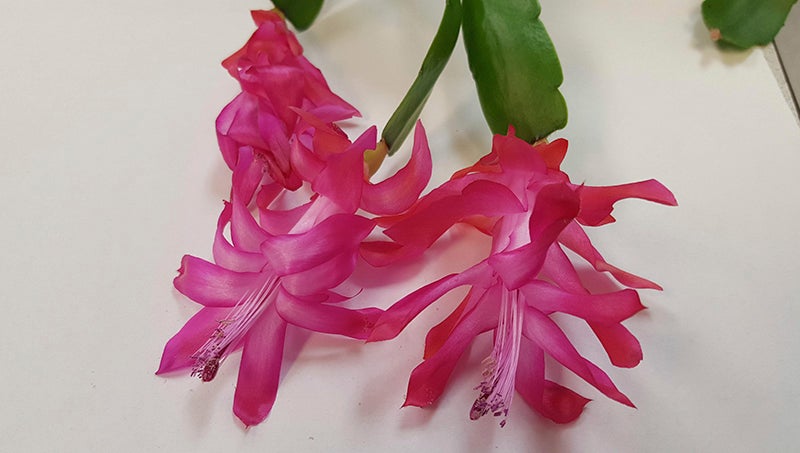Why won’t my Christmas cactus bloom?
Published 12:09 pm Friday, December 7, 2018
The Christmas cactus is a traditional and very festive gift this time of year. We browse by them in grocery stores, flower shops and many other establishments throughout the holiday season. They have beautiful blooms, from white, to pink, red and peach. They make wonderful houseplants, but, like many plants that we receive as presents, they require a little care after purchase to keep and encourage return blooming.
There are a couple of things to understand before we can talk about re-bloom in Christmas cacti. First, not all of these plants are Christmas cacti. Often, we are purchasing a Thanksgiving cactus (Schlumbergera truncata) not a Christmas cactus (Schlumbergera bridgesii). The differences between the two are very subtle but make all the difference in blooming.
The Thanksgiving cactus is an earlier bloomer by approximately a month (typically around Thanksgiving), making it a better seller for the Christmas season. One of the easiest ways to distinguish between the two plants is to look at the shape of the flattened stem segments called phylloclades. The Thanksgiving cactus has two to four points, or teeth, along the margins. Conversely, the Christmas cactus has a lobed or rounded margin. Another way to tell the difference is during bloom. The Thanksgiving cactus has yellow anthers (pollen bearing structures) and the Christmas cactus will have purple to brown anthers. If Alex Trebek shows up at your next Christmas party, you can wow him and your friends armed with this botanical truth!
So, how do we get them to bloom? I went on a trip in September of this year, so my office stayed closed up and fairly cold from our air-conditioning. I would guess that it was in the high 50s for the better part of the entire week. Approximately two weeks after I returned from my trip, my Christmas cactus was in full bloom. We can use temperature to force blooms on both the Christmas and Thanksgiving cactus. Keep night time temperatures on them between 50 degrees and 59 degrees until buds are set. Do not let them get below 50 degrees or injury may occur. After bud set, keep them between 60 degrees and 68 degrees, preferably closer to 68 degrees. Photoperiod can be manipulated to force bud set as well. Continuous darkness for 13-14 hours each night for approximately six weeks will force bud set. Both methods have their limitations. As little as two hours of light interruptions could inhibit bud set. If you are using temperature, plants will be injured at temperatures lower than 50 degrees. Temperature forces bloom regardless of photoperiod. The fool-proof method is using both together!
Propagate between May and June to give these as gifts to your neighbors next Christmas. If you have one or several, they are very easy to propagate to use as gifts for the next season. Simply count 3-4 phylloclades back from the terminal end of the stem and pinch it off at the joint. Allow to sit out in a fairly dark room for 24-48 hours. This allows a callus to form where you pinched it apart from the main plant. This callus helps to stimulate root growth and to protect against rot while roots are forming. Once the callus has formed, plant the callus end of the segment ½- to 1-inch in clean, moist, potting soil. Place the container in bright, indirect sunlight. Roots will form in a three to eight weeks, and the plant will begin to grow new segments. Once the new growth begins, you can transplant in to a larger pot. Doing several at one time will ensure better success.
If you are having an issue in your home garden or landscape, send your questions to Gene Fox, please email at Gene at gene_fox@ncsu.edu. Learn more on Facebook at the Blacklands Area Horticulture page or visit the Extension Office, located at 155 Airport Road in Washington.
Gene Fox is a consumer horticulture agent with the North Carolina Cooperative Extension Service, covering Beaufort, Hyde, Tyrrell and Washington counties.






